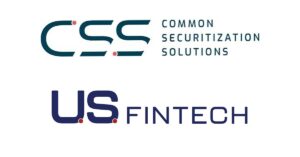The mortgage industry is undergoing a technological revolution with new innovations seemingly happening every day. All parts of the industry are evolving quickly as new tools change how people buy and finance homes. The mortgage process itself is at the center of this.
For instance,
home appraisals are often being done remotely. Originators are meeting with referral partners over Zoom rather than over food and drinks (although sometimes food is part of the Zoom call). How originators market and connect with potential clients is part of this ongoing technological transformation.
For millennials, technology and service are inseparable. The method for delivering service — the app, the website, the portal, the platform — is essential in determining what will drive their loyalty.
Digital tools allow originators and lenders to better manage their time and, consequently, increase their revenue opportunities. And originators will want to carefully consider the types of digital tools their lender partners are using. These tools can make a big impact on the originator’s business.
Difficult decision
Being willing and able to adapt in any business today, especially within the mortgage industry, means embracing the full-on development of digital tools and platforms. Otherwise, you’re putting your livelihood and very existence at risk.
Once companies accept the need to make a major investment in technology, leaders are faced with a tough decision. Should they develop proprietary applications that exactly suit their needs or adapt their existing practices to use “off-the-shelf” technology and hope they get close enough?
Off-the-shelf technology certainly has its uses. These tools can be faster and cheaper to incorporate for a company. In the long run, however, this route may not be the best choice. Off-the-shelf software may not meet your company’s needs. Worse, if all of your competitors have the same technology, with the same look and feel, then how can you set yourself apart?
Usually, building custom platforms and applications costs more. There’s more effort, energy and time required to get these systems up and running. The advantage is that this technology will distinguish your company from your competitors. The platforms could be built to address specific needs for your company.
Competitive advantage
Proprietary technology is any combination of digital processes, tools or systems that have been developed in-house and as such, belongs solely to the business. These proprietary systems provide a competitive advantage to the technology’s owners and serve as a valuable asset to the company.
In the past, custom tech was utilized mainly by software-as-a-service companies or businesses with technology at the core of their operations. But today, the technology and expertise to develop proprietary applications are more accessible to various industries, allowing for easier and faster digitization of core operations.
In the mortgage industry, proprietary tools and platforms exist to serve borrowers and originators more efficiently. In addition, internal technology systems are designed to improve operations, facilitate communications, and capture and analyze relevant consumer data. Although developing proprietary technology can require a substantial upfront investment, it can improve profitability over the long run by saving time and money.
Millennial factor
Millennials tend to prefer to conduct their business online. Having come of age with the modern smartphone, they are the most accustomed to having a very powerful and always-connected personal computer in their pocket.
For millennials, technology and service are inseparable. The method for delivering service — the app, the website, the portal, the platform — is essential in determining what will drive their loyalty, engagement and revenue. Consequently, having a comprehensive digital infrastructure in place will be pivotal in gaining a piece of the millennial market.
Careful consideration
When originators choose who they do business with, they need to carefully look at the technological offerings of their lending partners. Proprietary technology can distinguish your business from your competitors.
Consider the platforms that your lending partners use for marketing, scheduling and booking appraisals, as well as pricing and decisionmaking. How will each affect how you do your job and how your clients apply for a loan? Understand how your partners have upgraded and refined their systems in the past and what they plan to do in the future.
Because your brokerage is a dynamic, evolving organization, your lender’s technology also has to adapt and grow in order to remain competitive. Ultimately, a decision has to be made to work with lenders that use off-the-shelf solutions or those that choose to lead the way with proprietary technologies. ●
-
Max Slyusarchuk is co-founder of Imperial Fund and a founder and CEO of A&D Mortgage. He is also a shareholder and vice chairman of the board of Home Federal Bank of Hollywood. Slyusarchuk is responsible for the day-to-day activities, strategic planning, business development and building relationships with key partners. He has experience in both private equity investments and portfolio management for institutional and private sector clients in Eastern Europe and the U.S. Reach Slyusarchuk at (305) 760-7000.
View all posts








